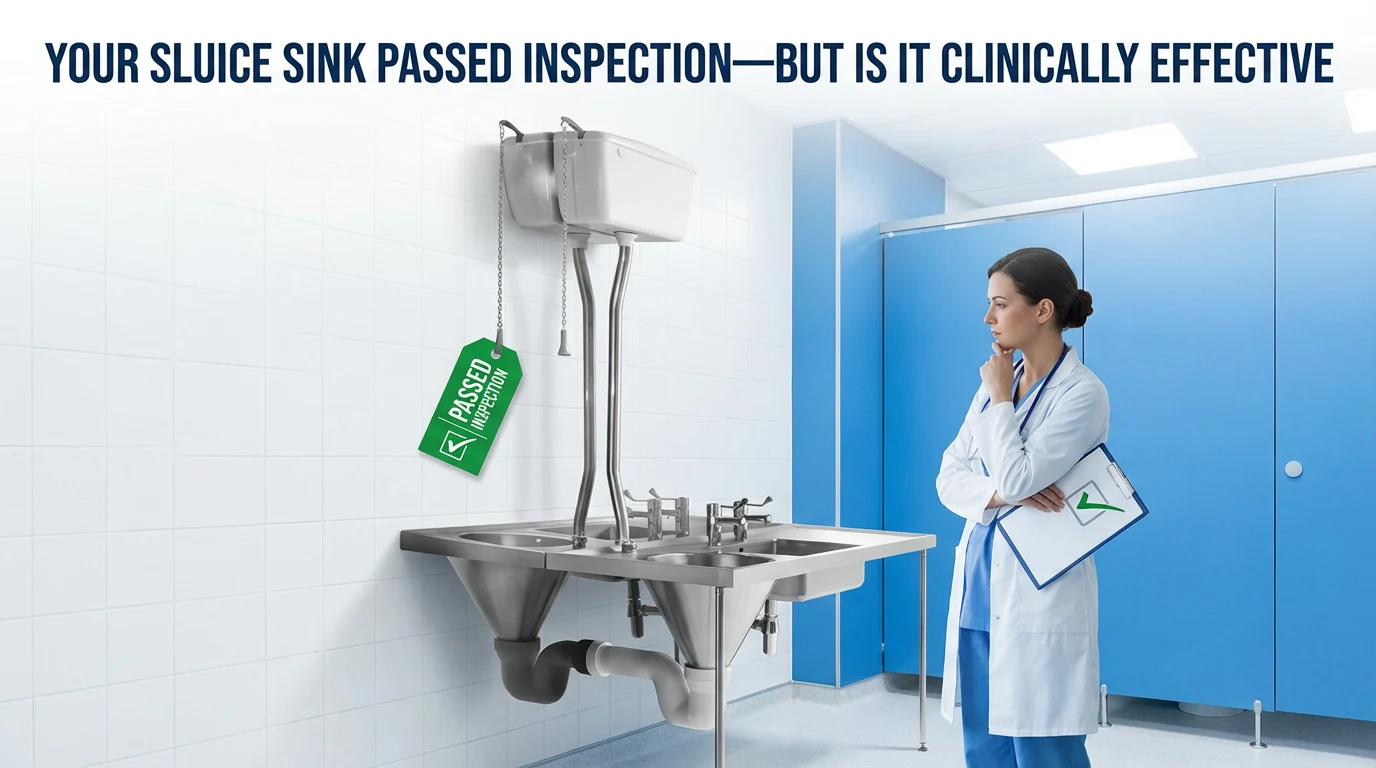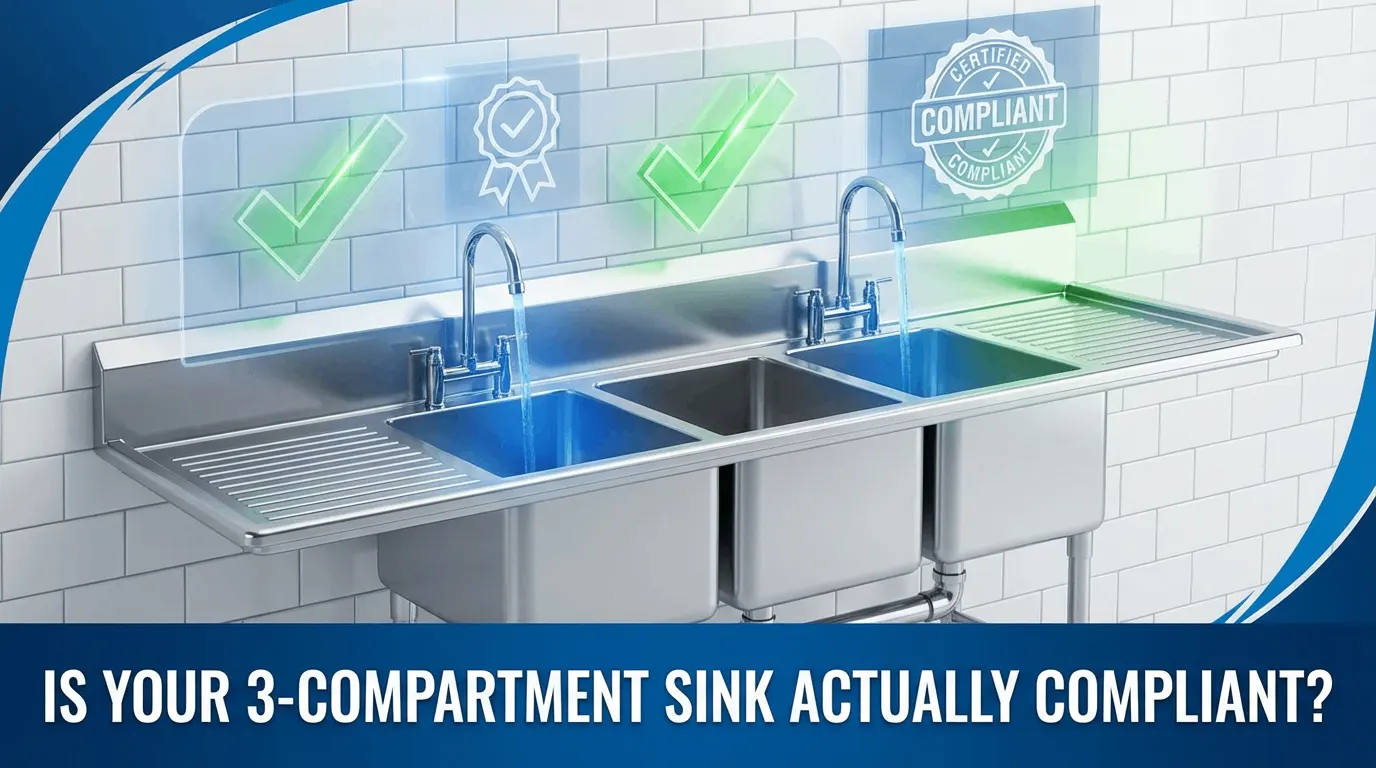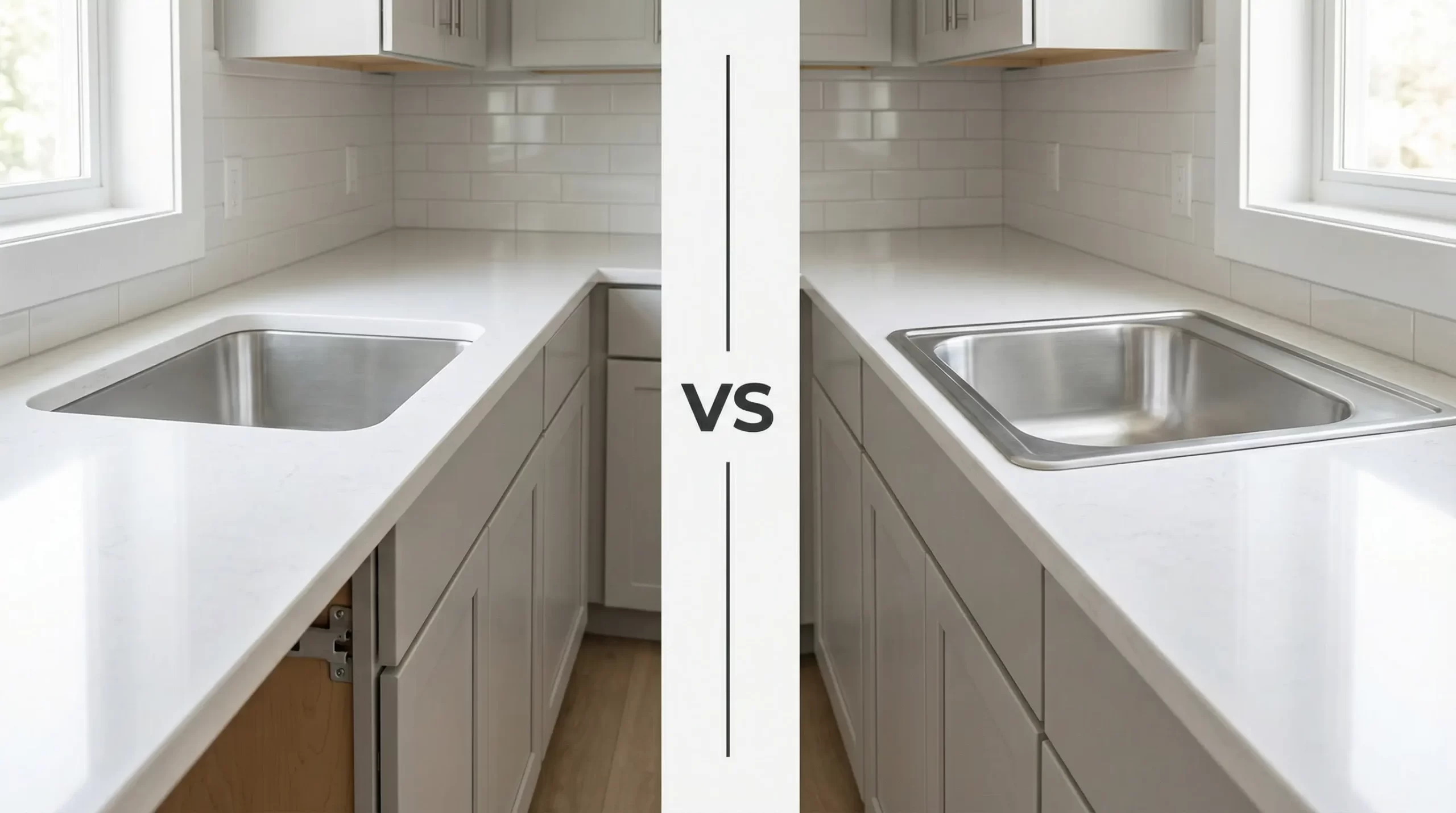Why Schools Invest in Stainless Steel Outdoor Fountains
Schools invest in stainless steel outdoor fountains to provide safe, durable, and sustainable hydration solutions that withstand heavy use, harsh weather, and promote health among students and staff. These fountains offer superior resistance to bacteria, corrosion, and vandalism while supporting environmental goals by reducing plastic waste. Backed by industry standards and real-world data, they deliver long-term value through low maintenance and compliance with health regulations. This choice reflects a commitment to student well-being, cost efficiency, and eco-friendly practices in educational settings.
Benefits of Outdoor Fountains
Hygiene & Safety
Ensuring access to clean drinking water is a top priority for schools, where hundreds of students and staff share facilities daily. Stainless steel outdoor fountains excel in this area due to their non-porous surface, which naturally inhibits bacterial growth and mold formation. According to the Centers for Disease Control and Prevention (CDC), proper maintenance of drinking fountains can significantly reduce the risk of waterborne illnesses in public spaces like schools. Many models incorporate touchless sensors, activated by infrared technology, which minimize contact and help prevent the spread of germs—crucial in high-traffic environments where viruses can easily transmit.
Stainless steel’s inherent properties stem from its chromium content, which forms a passive oxide layer on the surface, preventing microbial adhesion. Laboratory tests, such as those following ASTM standards, show that stainless steel surfaces harbor up to 90% fewer bacteria compared to plastic alternatives after 24 hours of exposure. This makes them ideal for maintaining hygiene without frequent chemical interventions.
- Stainless steel resists rust and corrosion, ensuring the water remains uncontaminated over time.
- Touchless activation reduces germ transmission by eliminating shared touchpoints.
- Smooth surfaces facilitate quick cleaning, often requiring only mild soap and water to remove residues.
Schools should prioritize fountains certified to key standards for added assurance. Here’s an overview of essential certifications, with explanations of their relevance:
| Certification | Description | Relevance to Schools |
|---|---|---|
| NSF/ANSI 61 | Establishes limits on contaminants leaching from materials into drinking water, based on toxicological evaluations. | Protects students from harmful substances like lead, ensuring compliance with public health guidelines. |
| cUPC Certification | Verifies adherence to Uniform Plumbing Code standards for safety and performance in North America. | Guarantees reliable operation and integration with school plumbing systems. |
| WaterMark Certification | Confirms suitability for potable water systems, particularly in regions like Australia, through rigorous testing. | Ensures global-standard safety for international or diverse school districts. |
Additionally, many stainless steel fountains comply with ADA (Americans with Disabilities Act) guidelines, featuring adjustable heights and knee clearances for wheelchair users, and meet ANSI/ISEA Z358.1 for emergency eyewash if integrated. These features not only enhance safety but also promote inclusivity, allowing all students to access hydration independently.
Durability
Outdoor fountains in schools must endure constant use, weather extremes, and occasional vandalism. Stainless steel stands out for its mechanical strength and longevity, often lasting 20-30 years with minimal degradation. Grades like 304 and 316 contain molybdenum, enhancing resistance to pitting corrosion from chlorides in water or salt in coastal areas. Accelerated aging tests, such as neutral salt spray per GB/T 10125, demonstrate no rust after 2,000 hours of exposure.
Compared to other materials, stainless steel offers a balanced profile of strength and maintenance ease:
| Material | Average Lifespan | Maintenance Needs | Key Drawbacks |
|---|---|---|---|
| Stainless Steel | 20-50 years | Low; occasional wiping to prevent water spots | Higher initial cost, but offsets with longevity |
| Bronze | 50+ years | Moderate; requires patina preservation and sealing | Prone to verdigris in humid environments; heavier |
| Marble | 100+ years | High; susceptible to acid etching and staining | Fragile to impacts; requires frequent sealing against weathering |
Vandal-resistant designs, including reinforced basins and tamper-proof fasteners, further protect against damage in school settings. Freeze-resistant options, with insulated valves, prevent cracking in cold climates, ensuring year-round functionality. This durability translates to fewer repairs, reducing downtime and operational disruptions. Manufacturers like Xinhe provide reliable options in 304 or 316 grades, focusing on these durable features to support long-term school investments without exaggeration.
Modern Design
Aesthetically, stainless steel outdoor fountains provide a contemporary appeal that integrates seamlessly with school campuses. Their sleek lines and reflective surfaces can enhance outdoor learning areas, serving as focal points for gatherings or educational activities. Sustainable features, such as integrated bottle fillers and recirculating systems, align with green initiatives, teaching students about resource conservation.
The versatility of stainless steel allows for finishes like brushed or polished, which resist graffiti and maintain appearance. In educational contexts, these fountains can incorporate non-slip surrounds and ergonomic heights for safety.
| Feature | Description | Educational Benefit |
|---|---|---|
| Durability | High-grade stainless steel withstands environmental stressors. | Reduces replacement frequency, supporting budget stability. |
| Low Maintenance | Self-cleaning properties minimize upkeep. | Frees staff for other tasks; promotes hygiene education. |
| Aesthetic Versatility | Various finishes complement architectural styles. | Enhances campus pride and visual learning environments. |
| Sustainability | Recyclable material with low embodied energy. | Aligns with curriculum on environmental stewardship. |
Modern designs often include LED lighting or solar-powered elements, adding functionality for evening events while emphasizing energy efficiency.
Meeting School Needs
High Traffic Use
Schools experience peak usage during breaks, with fountains serving dozens of users hourly. Stainless steel’s robustness handles this without wear, as evidenced by its use in public spaces where daily footfall exceeds 1,000. Features like reinforced mounting and impact-resistant bowls mitigate vandalism risks.
| Feature | Description |
|---|---|
| Vandal Resistance | Thick-gauge steel and secure fixings deter damage. |
| Durability | Withstands repeated impacts and UV exposure. |
| Low Maintenance Needs | Quick inspections suffice for high-use areas. |
This resilience ensures consistent access, supporting student hydration and focus.
Weather Resistance
Exposed to elements, outdoor fountains need materials that resist degradation. Stainless steel’s corrosion resistance comes from its passive film, reforming even if scratched. It performs in temperatures from -40°F to 120°F without warping.
| Characteristic | Description |
|---|---|
| Corrosion resistance | Chromium oxide layer prevents rust in moist conditions. |
| Weather resistance | No cracking in freeze-thaw cycles with proper insulation. |
| Strength and durability | High tensile strength absorbs wind and hail impacts. |
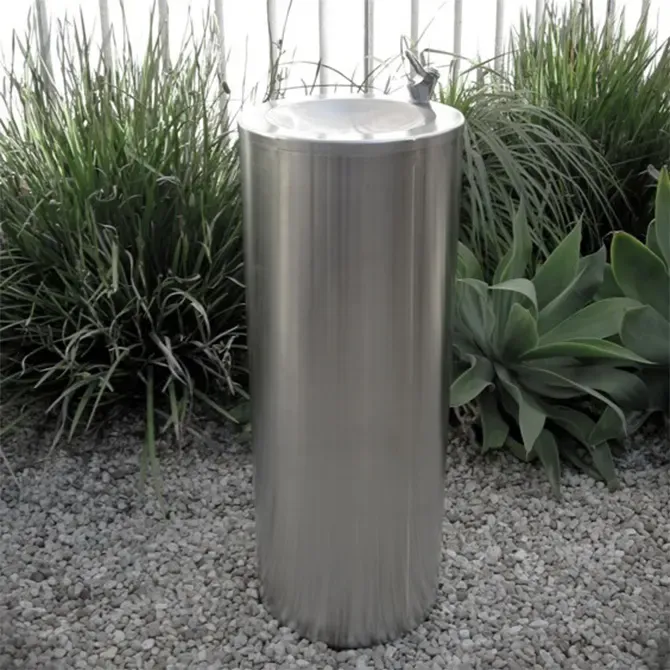
Accessibility
Inclusive design is essential. ADA-compliant fountains provide clear floor space and spout heights between 36-48 inches.
| Requirement | Description |
|---|---|
| Wheelchair Accessibility | Forward approach with 27-inch knee clearance. |
| Spout Height | 15-48 inches for universal access. |
| Protruding Objects | Maximum 4-inch protrusion above 27 inches. |
These ensure equity in hydration access.
Sustainability Impact
Reduce Plastic Waste
Bottle fillers in stainless steel fountains cut single-use plastics. A study showed schools reducing 30,000 bottles annually post-installation. Educational campaigns amplify this, fostering eco-awareness.
- Refills prevent landfill contributions.
- Data: One station saves 45,000 bottles yearly.
Eco-Friendly Hydration
These fountains lower carbon footprints by minimizing bottled water transport. Filtration ensures quality, encouraging tap use.
- Reduce plastics by 40% in six months.
- Energy-efficient models save on utilities.
Cost & Value
Low Maintenance
Stainless steel requires cleaning every 1-3 months with non-abrasive agents. This minimizes costs compared to other materials.
- Inspect for rust quarterly.
- Apply protective coatings for longevity.
Long-Term Savings
Initial costs are offset by durability; schools save on replacements and see 30% water efficiency gains.
- Annual energy costs: $35-48 per unit.
- Hydration improvements reduce health-related expenses.
Installation & Maintenance
Site Prep
- Clear the Area: Remove any debris or hazards from the installation spot. A clean, safe area helps prevent accidents and makes the job easier.
- Level the Surface: Prepare a flat base using pea gravel or a concrete pad, depending on the fountain’s size and weight. This keeps your fountain stable and looking sharp.
- Connect Water and Power: Make sure you have reliable water and power sources nearby. Securely connect the water pipe and pump, and check that the power supply is safe and accessible.
- Install the Pump: Place the water pump in the designated spot, then test it to confirm proper water flow.
- Adjust and Test: Use the bolts to fine-tune water flow direction and size. If your fountain has lighting, connect and test it as well.
- Finishing Touches: Cover any embedded devices and tidy up the area. Regularly check the water flow, pressure, and power to keep everything running smoothly.
Cleaning Tips
- Wipe down the fountain every 1 to 3 months with a cleaner made for stainless steel and a soft cloth.
- For high-traffic areas, clean at least once a month. Use mild soap or a gentle cleaner like Jif, then rinse and dry thoroughly.
- Skip abrasive cleaners. They can scratch the surface and make it harder to keep clean.
A simple cleaning routine keeps your fountain looking new and ensures safe hydration for everyone.
Troubleshooting
- Pump Failures: If water stops circulating, check the power supply and look for blockages in the pump.
- Leaks: Watch for cracks or faulty seals. Fixing leaks early prevents water waste and damage.
- Blockages: Debris can clog the system, causing sputtering or stopping the flow. Regularly clear out leaves and dirt.
- Algae Buildup: Algae can slow down the pump and affect water quality. Clean the fountain and pump regularly to prevent this.
If you ever need help, Xinhe offers responsive after-sales service. Their team can troubleshoot issues, provide replacement parts, and answer your questions—so you never have to face a problem alone.
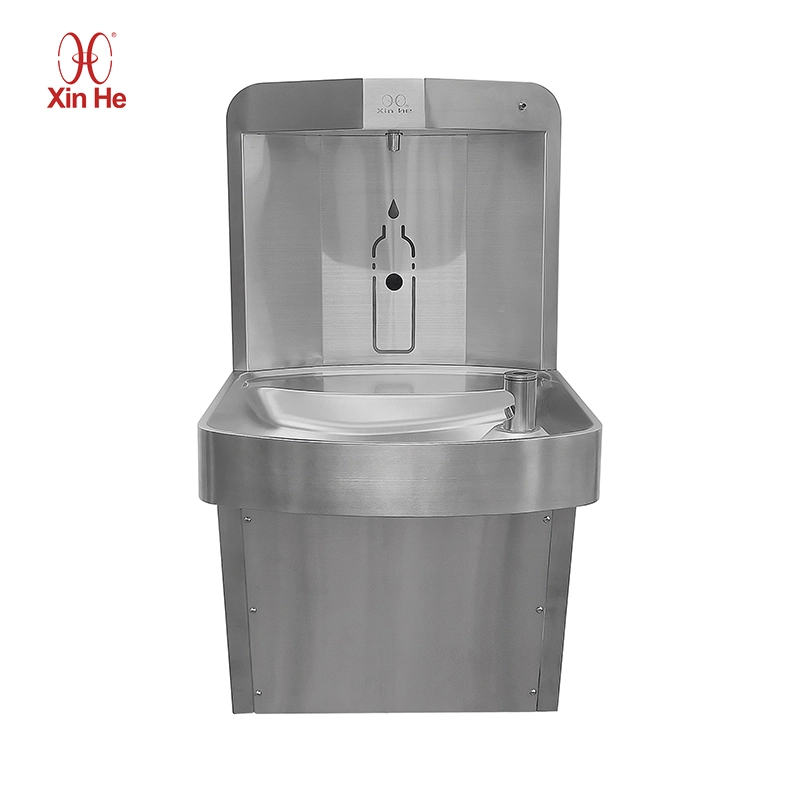
Customization
Design Options
Options include materials (304/316), colors, and features like fillers.
| Customization Option | Details |
|---|---|
| Material Choices | 304 for general; 316 for corrosive environments. |
| Color Options | Powder-coating for aesthetics. |
| Branding | Logos via etching. |
| Additional Features | Bottle fillers, pet bowls. |
| Mounting Configurations | Wall or pedestal. |
Case Study: Adelaide Botanic High School
Project Overview
Adelaide Botanic High School faced outdated troughs and poor hydration access. Installing 17 stainless steel fountains addressed this, improving water quality and usability.
Results
Post-installation, plastic waste dropped, and student satisfaction rose.
| Benefit | What It Means |
|---|---|
| Reliable Performance | Year-round access. |
| Low Maintenance | Reduced repairs. |
| Modern Aesthetics | Enhanced campus. |
Stainless steel outdoor fountains provide lasting benefits for schools, from hygiene to sustainability. For those considering implementation, providers like Xinhe offer practical solutions with features such as customizable designs and durable materials, encouraging schools to explore options that fit their needs—feel free to reach out for more details on how these can support your campus.
FAQs
Why choose stainless steel fountains for schools?
For durability and hygiene; Stainless steel resists rust, corrosion, and bacteria. Your maintenance team spends less time cleaning. Students enjoy safe, clean water every day.
Can I customize to match branding?
Absolutely! You pick colors, finishes, and even add school logo. Xinhe offers OEM and ODM services.
Are they easy to maintain?
Yes. You clean the smooth stainless steel surface with mild soap and water. The design lets you reach all parts easily. You save time and avoid costly repairs.
Do they support sustainability?
They do. You encourage reusable bottles with built-in bottle fillers. Stainless steel lasts for decades, reducing waste. Schools cut down on single-use plastics and support eco-friendly habits.
What warranty does Xinhe offer?
You get a 5-year warranty on all stainless steel fountains. Xinhe stands behind its products, giving you peace of mind and long-term value.


